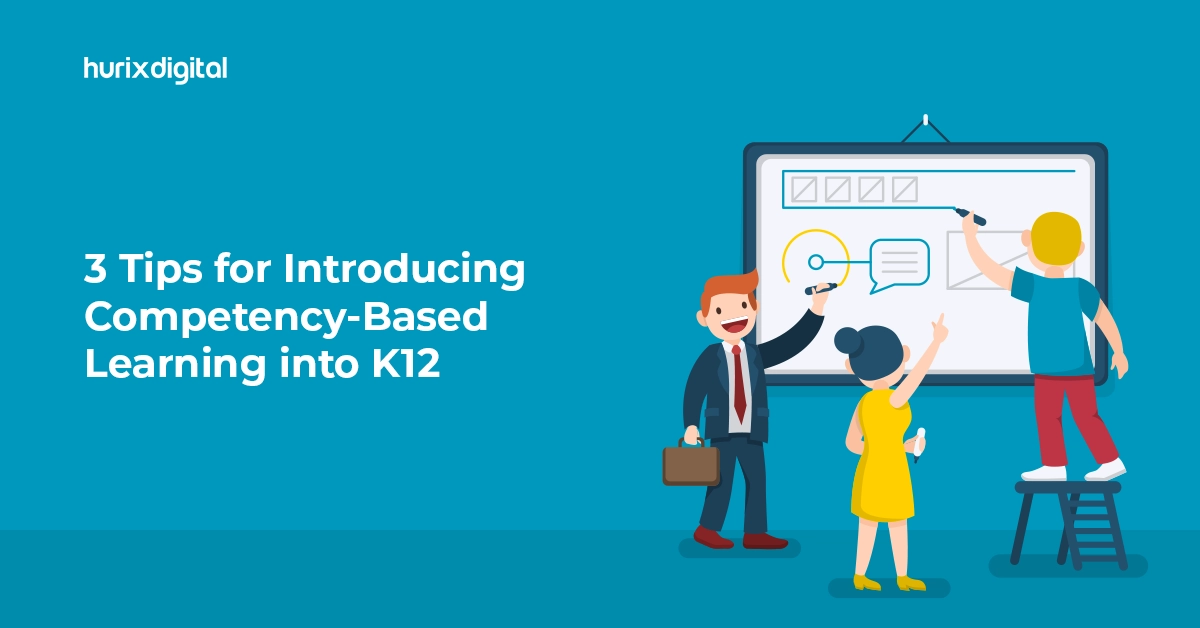
Why Should Higher Education Institutions Encourage Competency-Based Learning (CBL)
Educational institutions are continuously striving to identify better ways to improve the learning experience of students. In this regard, competency-based learning (CBL) is a modern technique that allows students to have a personalized learning experience. With this approach, students can acquire targeted knowledge/skills and achieve mastery at their own pace. Competency-based learning refers to an approach that comprises instruction, assessment, grading, and academic reporting based on an individual student’s performance. This learning approach confirms whether a student has assimilated the knowledge and skills that he/she is expected to, through a specific course or education system.
Also Read: Why Higher Education Institutions Need an Education Services Company
Table of Contents:
What is competency-based learning?
Competency-based learning or education is an approach that allows students to acquire knowledge and skills based on their capability to master at their own pace. This method is tailored to fit the different learning abilities of each student. This approach can lead to more efficient outcomes as it provides the flexibility to complete the course according to an individual student’s ability.
CBL is unique in its approach; it focuses only on what students learn, not on the time spent in a classroom to complete the course or earn credits. This learning approach is beneficial for students as it is flexible, engaging, and purpose-driven.
Also Read: Top 5 Online Course Platforms for Educational Institutions
White paper:
Impact of the Digital Ecosystem on Educational Institutions
How does competency-based learning affect student performance
1. Students can learn at their own pace
The main advantage of CBL is that it delegates the ownership of learning to the learner. It lets students learn and meet the completion criteria at their own pace. This approach focuses on the final outcome and not on the journey. As the courses are not confined by a set learning process or timeline, students don’t have to move to the next level with any gap in their understanding or learning. When students become confident about their acquired knowledge, they can take the final assessment test, receive credit, and complete that particular level of learning.
Also Read: Online Learning Courses – The New Reality for Institutions and Students
2. Engaging learning approach
Competency-based education is a better approach to keep students engaged and attentive towards their lessons. Students feel more involved with the learning material as they are the ones who have ownership over their learning. Here, they are empowered to control when, where, and how they learn, without any external pressure for course completion.
CBL also promotes personalized learning and accommodates a variety of styles. This experience increases engagement as the content is tailored to each student’s needs.
Related Read: How does Competency-Based Education Prepare Students for Employment
3. Students can advance to the next lesson after demonstrating mastery
The CBL approach allows students to spend more time on the learning areas that they find difficult. Depending on their ability to grasp and understand the concepts, students can even advance beyond their grade level in some subjects or take more time for areas they find challenging.
4. Students receive timely support based on their requirements
With CBL, students can have flexible time slots according to their availability, to receive additional instructional support from teachers. Teachers ensure that the students’ doubts and queries are addressed quickly. For instance, when a learner fails to complete a course, he/she focuses on the specific skills needed to do so, instead of retaking the entire course.
5. Helps develop soft skills
Along with a flexible learning experience, CBL also helps students develop a broad set of skills. In this learning approach, students actively learn critical-thinking and problem-solving techniques along with effective communication, collaboration, and cultural responsiveness. The overall learning experience that a competency-based curriculum provides, helps students to adjust to the ever-changing, diverse workplaces.
Also Read: How Can Higher Education Institutions Leverage a Moodle LMS?
Why should institutions adopt CBL?
To make the learning process more progress-oriented, educational institutions can consider adopting competency-based learning.
1. Flexible learning offers better outcomes
CBL programs are extremely flexible; there are no rigid schedules or fixed semester system, or mandatory regular classes. This learning approach is student-centric. Students can attend classes according to their availability, and they can approach their instructor for any kind of assistance. So, students can get the guidance of their instructor or teacher when and where they need, to complete projects and assessments at their own pace.
2. Assessment-based evaluation process offers a positive learning experience
The competency-based learning approach is based on assessments to evaluate the knowledge of a learner. Here, competency assessment tools and formative assessments offer prompt feedback to students, which helps both teachers and students to understand where the latter need help to master their objectives.
3. A skill-based training program ensures quality
To make learners workplace-ready, institutions must consider competency-based educational programs. This learning method focuses on real-world skills and competency development. The outcome is that students get appropriate education to be employment-ready and have expertise in their chosen fields.
4. Cost-efficient learning programs
In most cases, educational institutes can offer CBL programs as eLearning courses. As online offerings, CBL programs ensure reduced operating costs, which ultimately helps to reduce the tuition fees for a course. Students can get cheaper learning programs without compromising the learning quality.
The cost of CBL based programs can also vary with a student’s individual requirement and the duration that they need to complete a degree.
5. CBL programs have enough room for non-traditional learners
Students get individual attention from teachers when it comes to clarifying their doubts and achieving a better outcome after course completion.
6. It improves the rate of program completion, with a reduced drop-out ratio
In competency-based educational programs, students can take the assessment when they are actually ready for it. This system reduces the drop-out ratio, and more students can successfully complete courses.
Also Read: Advantages of Lifelong Learning for the Younger Generations
Conclusion
Competency-based learning focuses on changing the nature of the learning experience with personalized programs. This approach is vigorous as well as affordable, guiding students with a tailored way of learning to achieve a degree/certificate that makes them workplace ready. With the incorporation of cutting-edge technologies in the learning system and the implementation of different techniques, competency-based learning is all about top-notch scalability and enhancement. Adopting a competency-based learning approach can improve a student’s experience and make the courses more effective for modern learners.
Need to know more about our Products & Services ? Drop us a Note.

Senior Vice President – Business Development
Over 25 years of experience in the edtech and workforce learning industry with strong skills in Business Development, Customer Relationship Management (CRM) and Strategy.







